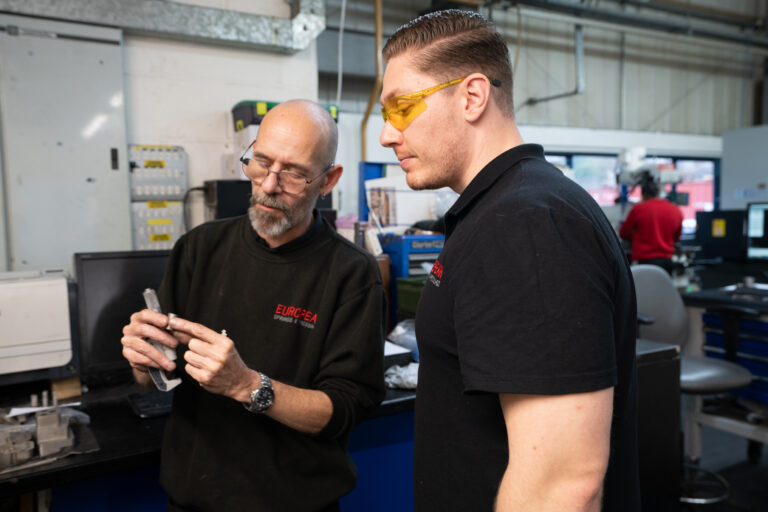Home › Manufacturing Capabilities › Spring Durability
‘Do springs lose tension when compressed?’ is the sort of question that often gets asked. The durability of a spring is measured by its ability to not lose force, or shorten under a given force when subjected to spring travel. If a spring is to be durable, the stress in the material must not be greater than the strength of the material permits.
When a load is applied to a piece of metal, it must deflect first elastically, and if the load is high enough, it will also do this plastically. Elastic deflection is when the material returns to its previous shape after unloading. During plastic deflection, the metal receives a permanent deformation and cannot return to its previous shape after unloading. This is why it is the elastic part of the deflection which is used to receive the deflection in durable springs.
The function stress and deflection is described in Hooke’s law and is where the elastic module E for normal and G for shear stress is described. These E and G modulus are the figures describing elastic behaviour for metals. A low figure means more deflection than a high figure for the same stress, this results in a metal with high strength normally able be loaded to a higher stress without passing the limit where the deflection starts to be plastic; hence more elastic deflection. The stress limit when the metal starts to deflect plastically is the materials yield strength. The ultimate tensile strength is the stress at which the metal breaks.
Two more material properties that are are of great interest for springs it is the creep/relaxation and the fatigue. A physical phenomenon with certain metals is that at stress below the yield strength of the material a very slow plastic deformation take place. In the spring branch this is called ‘creep’.
How much creep/relaxation occurs depends on the temperature, the stress in the metal and/or the metals yield strength and the time. For example, increased temperature, stress and time also increase the creep/relaxation.
It is especially the temperature and stress that have a big influence on the durability of a spring. Here at European Springs, we regularly carry out relaxation and creep tests on different materials with different types of spring models. We like to provide extensive information and knowledge about this important property of creep/relaxation.
Also with metals, a pulsated stress below the yield strength of the spring materials can cause break or fatigue to occur. The problem of fatigue starts with the development of a micro fatigue crack which grows for every pulsation. When the stress in the remaining material reaches the ultimate tensile strength the spring will break.
Like with all our regular checks and improvements, European Springs carries out fatigue tests on various materials and types of springs helping to provide knowledge and information about this important spring property of fatigue.
The risk of spring fatigue depends on other factors too, such as the designed stress in the spring, alongside the amplitude of the pulsation and the material’s maximum tensile strength.
We like to highlight that a material with the same chemical analysis and strength can have different fatigue properties as other material factors have an influence on the springs structure.
Temperature and corrosion can also affect the fatigue strength of a spring and this means when testing the fatigue strength, the spread makes its necessary to use statistic methods to get reliable results. This enables us to calculate the risk levels for breakages or security factors.

And even if we don’t have exactly the tool we need, European Springs’ in house technology enables us rapidly to design and make complex tools, allowing us to offer more competitive prices.



© Copyright 2025 | European Springs
Designed, Promoted and Powered by SQ Digital